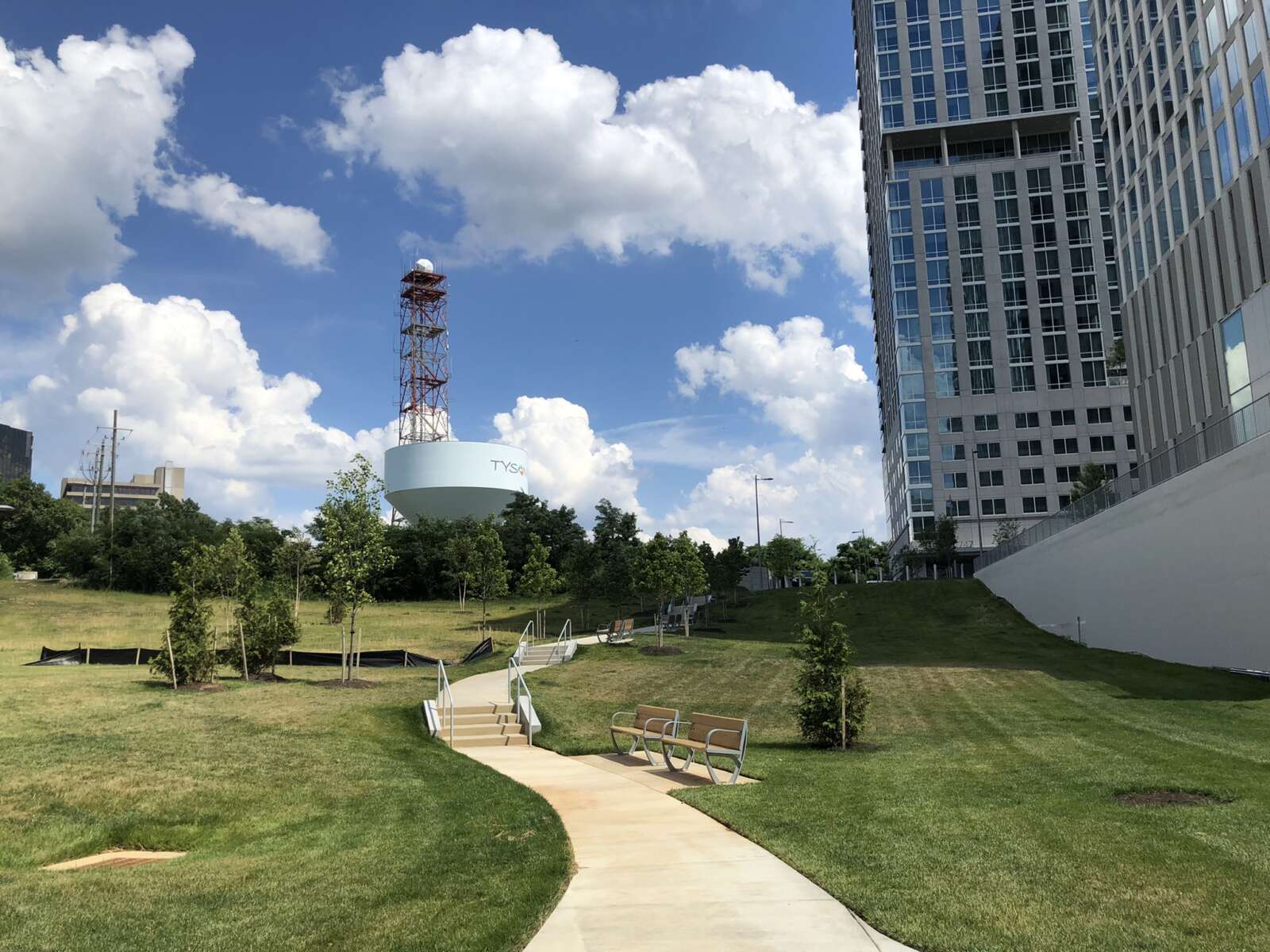
Tysons has seen some promising developments in its transportation network in recent years, but many obstacles remain to achieving Fairfax County’s vision of a truly accessible downtown, a market study released earlier this month suggests.
Commissioned by the Tysons Community Alliance, the 2023 Tysons Market Study characterizes the 2,100-acre urban center as “somewhat walkable” — meaning at least some errands can be accomplished on foot — based on its official average Walk Score of 57.
Calculated based on population density, the distance to amenities, block lengths and other factors, the walk score ticked up from the 54 that Tysons got in 2020 when the COVID-19 pandemic began. The area is more walkable than Reston, which has a score of 40, but it falls short of more urban areas in the region, including Crystal City in Arlington (71) and downtown D.C. (98), according to the study.
The most walkable properties are in central Tysons, particularly around the Greensboro Metro station, which is also where multifamily housing has concentrated, TCA CEO Katie Cristol notes.
“That increase in the walk score is a real validation…of how environmentally sustainable, how much better in terms of quality of life the new residential development has been in Tysons,” Cristol said. “It is in the right places, it is in places that are walkable, so more Tysonians live [in places] walkable to Metro and other amenities and can easily reach the necessities of their lives on foot than could before.”

However, properties east of Route 123 — where most for-sale and single-family units are located — tend to be more car-dependent, per the study. Based on 2021 Census data, the percentage of car-free households in Tysons has jumped up to 5.1% — an over 50% increase from 2019 — but 47% of households still own two vehicles.
In addition, the TCA identified 4.6 miles of missing sidewalks, and most of the 24 miles of sidewalk that do exist are just 4 feet wide, which “is not ideal for a growing area seeking to promote walking,” the study says.
The improved Walk Score was also tempered by a lowered Bike Score, which dipped from 49 in 2020 to 43 this year. Categorized as “somewhat bikeable” with “minimal” infrastructure, Tysons trails Reston, which stayed flat at 54 over that time frame. Read More

Safety, access, and equity are among the top priorities for Fairfax County residents when it comes to envisioning the future of transportation in the area.
The Fairfax County Department of Transportation released a draft report on Aug. 31 for its ActiveFairfax Transportation Plan, which will combine and update the county’s Bicycle Master Plan and Countywide Trails Map into an overarching plan for amenities to support walking, cycling, and other self-propelled modes of travel.
The draft comes after the county conducted a dozen virtual community conversations with residents this past spring to learn more about their concerns and desires.
The county also received public input from 1,474 virtual community survey responses, 1,217 comments on a virtual barrier and destination feedback map, and 537 comments on virtual planned trail, bikeway network, and complete streets map.
The feedback informed the draft report, which proposes a general framework for the ActiveFairfax plan with four goals:
- Access and connectivity
- Safety and comfort
- Livability and health
- Equity and social justice.
Access and connectivity refers to the goal of providing “a well-connected, multimodal transportation network that offers safe, convenient, healthy, sustainable and affordable mobility options for Fairfax County,” according to the draft.
Objectives under that goal include a focus on planning, implementing, and maintaining a network of safe and comfortable sidewalks, bikeway, trails, and streets that link residential and commercial areas.
The “safety and comfort” goal encompasses efforts to minimize traffic injuries and fatalities with an emphasis on active transportation users, including by pursuing policies and incentives that reduce vehicle trips and travel speeds.
Addressing livability and health will “advance public health, sustainability and the quality of life by providing inviting sidewalks, bikeways and trails that encourage frequent usage,” the draft says.
In order to achieve this goal, the draft proposes providing a variety of educational and promotional programs and events to promote active transportation modes, as well as applying best practices to street designs, including adding wider sidewalks and ensuring bicycle facilities are available for a variety of ages and abilities.
Finally, the goal of addressing equity and social justice aims to “provide a multi-modal transportation system that prioritizes the needs of the most vulnerable road users including communities of color, low-income communities, small children and their caregivers, youth, people with disabilities, and older adults.”
This fourth goal’s objectives include adhering to the county’s One Fairfax policy when developing or evaluating active transportation policies, programs, facilities, and practices. It also means making sure the public engagement process for transportation policies and projects is inclusive so that everyone’s needs are adequately addressed.
The county’s transportation department will host two virtual community meetings to further discuss the draft’s vision, goals, and objectives. The meetings will be held Sept. 13 at 7 p.m. and Sept. 15 at 6:30 p.m., and links to sign up for each are available on the county’s site.

